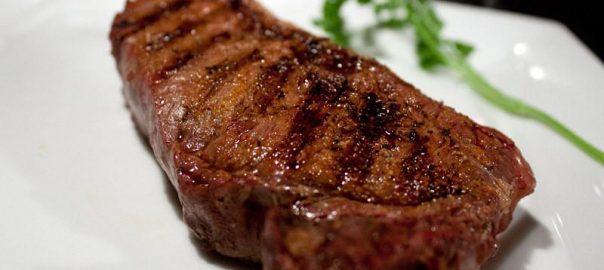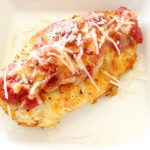
Cooking With Bison The Low Carb Way
The Ultimate Guide to Low-Carb Cooking with Bison
What would you say to a great protein source that has fewer calories and less fat than beef, chicken, or pork? One that’s also lower in cholesterol than chicken or pork?
The meat in question is bison. It’s the healthy red meat. Try it in a stir-fry, slow-cooked, or as the ground meat in your next pasta sauce and find out for yourself.
The important thing about cooking with bison is that it has an extremely low fat content which makes it very easy to overcook. As a result, many people come away from their first experience dining on bison with the impression that it’s tough. Not so. You just have to handle it right.
In this guide, we’ll show you the right way to cook bison to help you make the most of it. We want you to cook bison like a pro so you can wow your friends and enjoy all the benefits of eating this fantastic source of protein.
Eating bison for all the right reasons
Before we dive into the how-to section, let’s spend a little time examining the whys. There are several great reasons why you should eat bison. Here are the big four.
1. It’s high in protein, low in fat
A 3-ounce serving of bison will give you 48% of your daily value (DV) of protein, making it an excellent source of complete protein. This same serving only has 3% of your DV for fat and 4% of your DV for saturated fat. Even grass-fed beef isn’t that lean.
2. It’s a great source of minerals
This same 3-oz serving gives you the following minerals:
- iron (56% DV) – vital to forming red blood cells that transport oxygen around your body
- phosphorus (18% DV) – forms strong bones
- zinc (21% DV) – enables your senses of smell and taste
- selenium (43% DV) – essential to the production of DNA, helps prevent cell damage caused by free radicals
3. It’s heart healthy
It’s official; the science backs it up. Eating bison instead of beef leaves you less likely to develop clogged arteries. A study published in the journal Nutrition Research found that eating beef leads to significant increases in both triglyceride levels and markers of inflammation, two clear indicators of heart disease. But eating bison instead led to a smaller increase in triglycerides and no increased inflammation.
4. 4. Vitamins, vitamins, vitamins
Bison is also a rich source of many essential vitamins. It’s a rich source of:
- Riboflavin (22% DV) – an essential coenzyme
- Niacin/B3 (40% DV) – deficiency can lead to nausea, lesions, anemia, headaches, tiredness, etc.
- B6 (31% DV) – involved in macronutrient metabolism, among other things
- Cobalamin/B12 (102% DV) – necessary for cell metabolism
The basics of cooking with bison
A cut of bison’s tenderness depends on how much connective tissue is within it. And the amount of connective tissue generally depends on two things. First, you must consider the original location of the meat. There’s more connective tissue in active muscle groups. Second, there’s the maturity of the carcass. In other words, there’s more connective tissue in older animals.
The key to cooking with bison is to match the cooking style with the tenderness of the cut. Do it right and your bison will be tender. Every time.
The most tender cuts of bison cook best using dry heat. Methods like roasting and grilling work best. For cuts of medium tenderness, try a combo of dry and moist heat. You can still grill them, but a marinade will help. And for less tender cuts, avoid dry heat entirely. This meat is best braised or in stews.
Compared to beef, bison has less fat and more moisture. As a result, bison cooks much quicker than beef. If you cook bison the same way you cook beef, chances are you will be disappointed. Avoid that pitfall—not all red meat is created equal. Bison has its own rules of engagement that must be respected, as we’ll discuss shortly.
Due to its inherent lack of fat, you won’t find the marbling in bison that you’re used to in beef. This marbling helps beef by locking in moisture in case it’s accidentally—or, God forbid, intentionally—overcooked. You don’t get the luxury of wiggle room with bison. When it’s medium, it’s done. End of discussion.
To avoid overcooking tragedies on the grill, it’s best to follow a few simple guidelines with bison. First, use lower temperatures. Second, use longer cook times. Third, do not exceed medium doneness—this can’t be said enough. And fourth, keep cooking less tender portions until they’re fork-tender. If you’ve got to work to get the fork in there, you’re rushing it.
Roasting tender cuts of bison
This method works well with tender cuts like:
- tenderloin
- top sirloin butt
- prime rib
- short loin
- strip loin
- rib-eye
Preheat your oven to 250°F – 275°F. If you prefer to season your dry roasted meat, do so now while the oven’s warming. Then, quickly brown the surface of the meat in a hot skillet. But don’t overdo it.
Transfer the meat to a roasting pan fat side up. This is so the meat won’t sit in its own juices while it roasts. Don’t add liquid, and don’t use a lid. Just slide it in the oven uncovered.
A meat thermometer will come in handy at this point. Your roast is done when it hits 160°F, but it’s best to get it out of the oven when it’s in the 150°F – 157°F range. The temperature will continue to rise a few degrees while the meat rests.
Let it rest for at least 20 minutes—30 if you can—before you carve.
Tender cuts on the grill or in a stir-fry
These methods work best with tender cuts like:
- tenderloin steak
- strip loin steak
- t-bone steak
- rib steak
- top sirloin steak
- ground meat
- brochette
- medallions
- ground patties
Season your meat but don’t salt it. Heat up your grill, wok, etc. Cook until you’ve reached preferred doneness. Steaks vary from very rare at 130°F to medium at 160°F. Salt can be added after if desired.
When pan-broiling, thinner steaks usually take about 2–3 minutes a side.
When using ground bison, go for medium well doneness. That’s 165°F. The meat will be brown down to the center and the juices will run clear.
Cooking cuts of medium tenderness
Use these methods for medium tender cuts like:
- sirloin tip steak
- skirt steak
- hangar steak
- osso buco
These cuts can be broiled or barbecued, pan-fried or stir-fried.
Marinating is the key to getting medium tender bison to cook well. Steaks should be marinated at least 6 – 8 hours. Alternatively, you could use a basting needle to inject the marinade right into the meat.
If you want to use your steaks in a stir fry, partially freeze them. Then slice the meat thinly against the grain. Then marinate 6 – 8 hours.
Doneness can vary from rare at 140°F to medium at 160°F.
Cooking the less tender cuts
Typically, tougher cuts include:
- braising steak
- stew cubes
- brisket
- short ribs
- chuck roll
- shoulder clod
- flank steak
These cuts work best braised, stewed, and pot roasted.
Pre-heat to anywhere between 250°F – 325°F. For stews, cube the meat. Season meat and pan-sear until brown. Put meat in the pan and add liquid, etc. until meat is covered. Put a lid on it and slide it in the oven.
Keep cooking until meat is fork tender. This takes time, so be ready to play it by ear. It may be necessary to add some extra liquid to the pot, so try to hold some in reserve.
Bye-bye, beef. Hello, bison!
If you’re looking to shake things up a bit in the kitchen, maybe it’s time you tried bison. It’s packed with protein, light on the fat, and bursting with vitamins and minerals. All that, and it tastes great, too.
You can use bison in just about any beef dish. Lasagna, chili, bourguignon. Just reduce the heat and extend the cook time slightly. Once you get the hang of it, you’ll be whipping up impressively heart-healthy meals low in carbohydrates, fat, calories and cholesterol.
Make bison an integral part of your low-carb lifestyle today.






